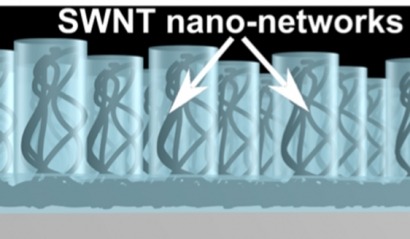
The use of carbon-based nanostructured materials as components in solar cells is becoming increasingly popular because of their exceptional properties. Now, in a new study, a team of physicists and chemists at Umeå University have joined forces to produce nano-engineered carbon nanotubes networks with novel properties. Their results have been published in the prestigious journal Advanced Materials.
Carbon nanotubes, or CNTs, are one dimensional nanoscale cylinders made of carbon atoms that possess very unique properties such as very high tensile strength and exceptional electron mobility. This makes them very attractive for the next generation of organic and carbon-based electronic devices.
CNTs are expected to enhance the performance of current solar cells through efficient charge transport inside the device. However, in order to obtain the highest performance for electronic applications, the carbon nanotubes must be assembled into a well-ordered network of interconnecting nanotubes. Unfortunately, conventional methods used today are far from optimal which results in low device performance. The researchers at Umeå University have found that carbon nanotubes can be engineered into complex network architectures with controlled nano-scale dimensions inside a polymer matrix.
“We have found that the resulting nano networks possess exceptional ability to transport charges, up to 100 million times higher than previously measured carbon nanotube random networks produced by conventional methods” said Dr David Barbero, leader of the project and assistant professor at the Department of Physics at Umeå University.
The high degree of control of the method enables production of highly efficient nanotube networks with a very small amount of nanotubes compared to other conventional methods, thereby strongly reducing materials costs. In a previous study the research team of David R. Barbero already demonstrated that nano-engineered networks can be produced onto thin and flexible transparent electrodes that can be used in flexible solar cells. These new results are expected to accelerate the development of next generation of flexible carbon based solar cells, which are both more efficient and less expensive to produce.
For additional information:

